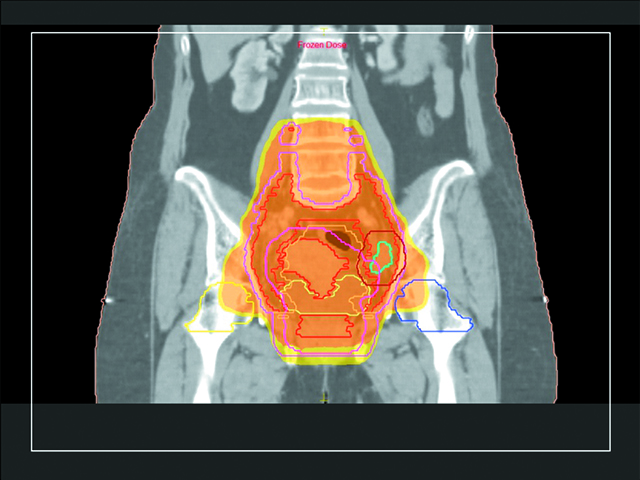Dr. Siddhesh Tryambake
- Home
- Dr. Siddhesh Tryambake



Dr. Siddhesh Tryambake
Case Report – Ca Cervix.
A 48-year-old female from Virali, Satara, presented with complaints of reddish discharge per vaginum and lower backache since 2 months. She was married at the age of 20 years. She had no family history of any malignancy No comorbidities or past h/o TB On examination she was in a good general condition. No pallor/ edema feet/ icterus No palpable neck or inguinal lymphadenopathy P/S/V/R – 4 x 4 cm, infiltrating growth involving both lips of cervix, 4 cm from the introitus, all fornices obliterated, bilateral para medially involved, rectal & vaginal mucosae free. Rest of the systemic examination was normal. No bony tenderness No bowel bladder dysfunction.
Cervical Biopsy –Moderately differentiated Squamous Cell Carcinoma (MDSCC) CECT (Abd+Pel) – Cervical growth with significant pelvic nodes. Imp – Node Positive Ca Cervix FIGO Stage IIbMDSCC Plan – Definitive Chemo Radiation- EBRT (External Beam Radiotherapy)to whole pelvis to a dose of 50 Gy/25 fractions over 5 weeks with once weekly Cisplatin 2 (40mg/m ) followed by nodal boost to a dose of 5.4 Gy/3 fractions followed by 3 sittings of ICA (Intra Cavitary Application) brachytherapy.
Thus , as planned this patient has concluded EBRT to whole pelvis to a dose of 50 Gy/25 fractions over 5 weeks (w.e.f 3.7.18 to 6.8.18) with 15 MV photons using 3DCRT technique with concurrent Chemotherapy followed by pelvic nodal boost to a dose of 5.4 Gy/3 fractions over 3 days (w.e.f 7.8.18 to 9.8.18) Fig (1-3) She had tolerated EBRT well with maximum RTOG toxicity – Skin – Grade I, GU – I, GI – I . After completion of EBRT she was planned for brachytherapy. Brachytherapy would help with better conformality, making it feasible to deliver maximum dose to the tumour sparing the surrounding normal structures (OARs) like bladder, rectum and sigmoid. Thus she underwent 3 # ICA brachytherapy on 27.8.18, 12.9.18 and 26.9.18 and tolerated the same very well. A cross sectional imaging shown in figure 3 depicts target & organ (OAR) at risk delineation. 100% Dose deposition is shown around the hyperintense applicator encircled in blue. Her entire course of treatment has been uneventful & currently, she is free of her symptoms. She has been asked for follow up after 6 weeks. With the availability of State-of-the-Art Advanced Radiation technology, it was feasible to deliver standard treatment of care using combination of EBRT & Brachytherapy thus enabling maximum tumour dose while sparing surrounding healthy organs (minimal side effects) reflecting into better quality life.
